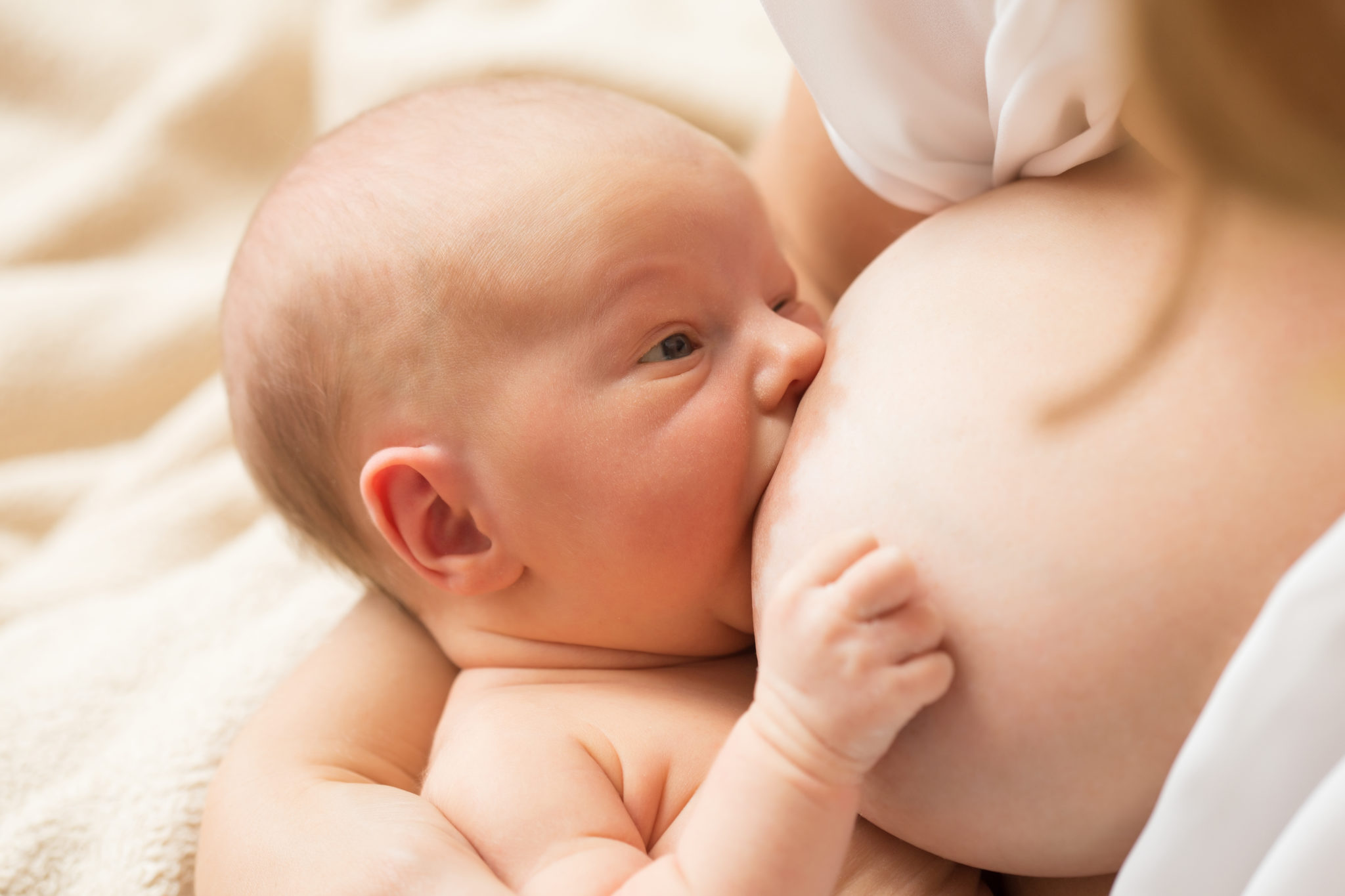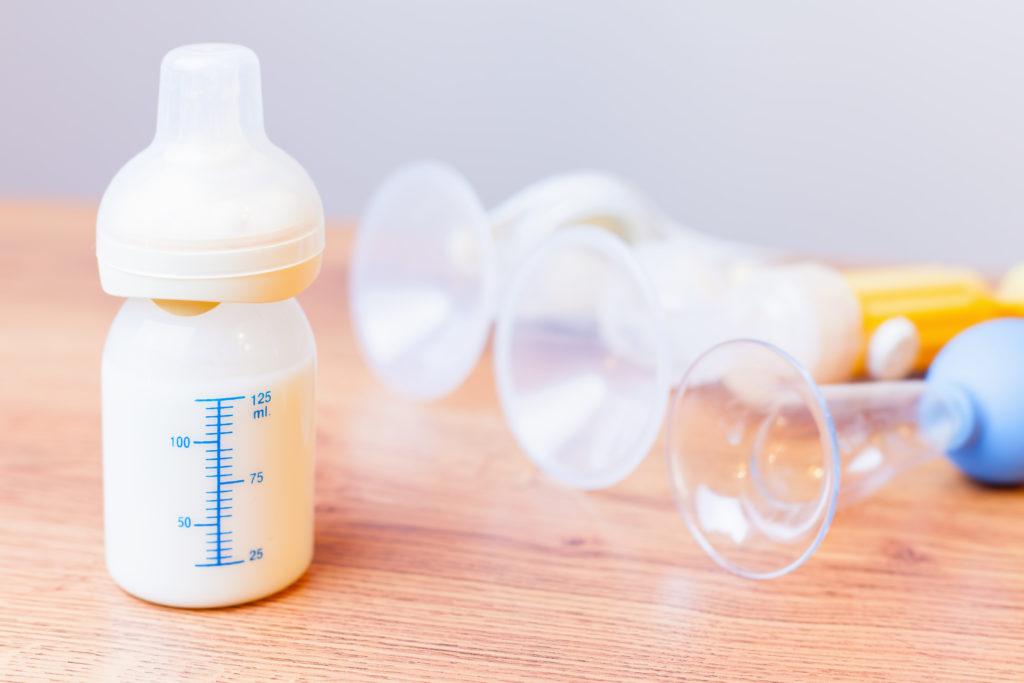 We know breast milk is supercharged with immune-strengthening nutrients, but did you know that little building blocks known as stem cells are present in breast milk? You’ve probably heard the flurries of controversial news pieces covering the latest in stem cell research throughout the years, and it can be confusing to keep track of exactly what stem cells are – especially when your last science class was decades ago!
We know breast milk is supercharged with immune-strengthening nutrients, but did you know that little building blocks known as stem cells are present in breast milk? You’ve probably heard the flurries of controversial news pieces covering the latest in stem cell research throughout the years, and it can be confusing to keep track of exactly what stem cells are – especially when your last science class was decades ago!
Simply put, stem cells are cells capable of continuously dividing and developing into many other kinds of cells. We can learn a lot from stem cells by studying them in a variety of ways. Human embryonic stem cells, for instance, give us a window into the complexity of human development. Medications can also be tested on human stem cells rather than people themselves.
The most valuable potential for stem cells is their ability to grow new tissues and be used in cell-based therapies. This could mean a consistent source of cells to treat diseases like stroke, diabetes, arthritis, and Parkinson’s.
Scientists have been investigating the multifaceted role of stem cells in breast milk for the past ten years and, as technology has become more and more sophisticated, pointing to exciting implications of these cells in the health of the baby and the mother.
Foteini Kakulas and ‘tdTomato’
Dr. Foteini Kakulas (formerly Hassioteu), an Australian scientist, recently conducted an experiment showing that stem cells from breast milk have the potential to transform into other kinds of body cells, like brain, fat, liver, and bone cells. She knew stem cells were present in breast milk, but how could she see exactly what happened to the cells after the baby drank them up?
Dr. Kakulas created genetically modified mice with the tdTomato gene, a gene that caused the cells to glow red when exposed to fluorescent light. (Fitting name for the gene, right?) After mating, baby mice without the tdTomato gene breastfed on these female tdTomato-modified mice. This way, any cells having passed from mothers to babies would show up in the babies as bright red.
Just as suspected, when the babies had grown into adults, these red cells from their mothers were present and functional in their blood, pancreas, liver, spleen, and brain tissues. Because the breast milk stem cells can make other tissues, it’s likely that these cells can be used in the future of regenerative medicine.
How do stem cells directly affect me and my baby?
You can see how the stem cells in your breast milk have the awesome potential for affective cell therapy in the field of regenerative medicine, but what about for you and your baby? After all, it’s your milk.
Dr. Kakulas demonstrated the presence of the mother’s stem cells even when her breastfed baby has fully grown. You’re literally giving your baby living cells to nurture her brain, liver, immune system, and all other sorts of body systems and parts.
Next time you hear a mother express nervousness at the little road bumps that may pop up throughout breastfeeding, remind her that she’s giving her little one a gift that will last them the rest of their life. (Now, if only we could figure out a way to make the stem cells we give our children glow red under fluorescent light. Talk about a neat home science experiment when they’re a little older, and a super vogue style for teenage parties.)
What’s the difference between embryonic stem cells and breast milk stem cells?
There’s a lot more known about embryonic stem cells, but their use has always been hotly debated. From an ethical standpoint, it can seem like an impossible situation. An embryo needs to be destroyed in order to get the embryonic stem cells, so it’s impossible not to destroy a potential life while obtaining the very cells that will go on to help in medical research. But it also seems wrong to put a stop to research that leads to groundbreaking medical discoveries and treatments that will help relieve the suffering of so many people.
Breast milk takes out the need to destroy an embryo, taking away the ethical dilemma that has always marred even the most important findings in stem cell research. Another characteristic of breast milk stem cells is that they also don’t multiply as much as embryonic stem cells, which translates into less of a risk for stem cell therapy to grow into cancerous tumors, which is a risk factor in stem cell therapy. In fact, in Dr. Kakulas’ experiment, she found that when breast milk stem cells were injected into mice, the mice did not develop tumors.
Breast is Best
Once again, the more you look at breastfeeding, the more obvious it becomes that it is by far the best choice. With the exciting discovery of stem cells in human milk, we now know that the milk your body produces could be used in ethical dilemma-free research that has the potential to alleviate so many different kinds of illnesses.




john colvin
February 10, 2020 at 12:59 pmif an adult consumes breast milk will they get the same benefits as children , it seems that pluripotent stem cells have an enormous amount of disease fighting strength , after all human milk is for humans it cant just be for children , why isn’t research being done on this